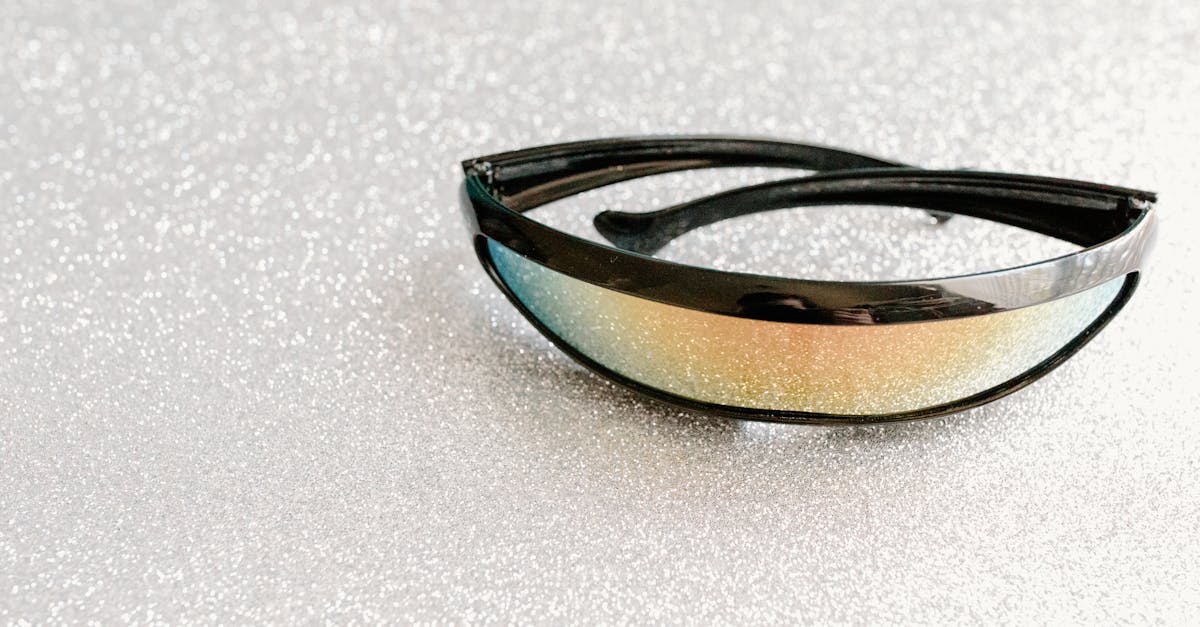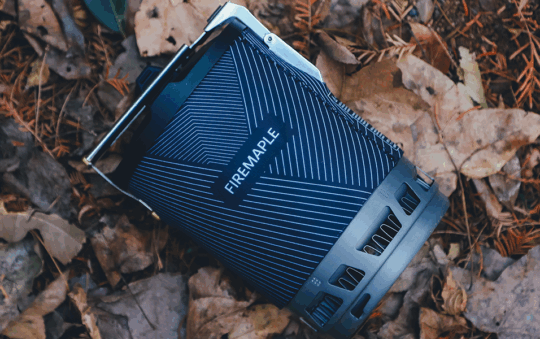Have you ever watched a child struggle to see clearly through foggy goggles during swim time? I’ve been there—seeing my little one’s excitement fade as their vision blurred underwater. That’s why I started exploring kids’ goggles with anti-fog lenses, a game-changer for keeping those tiny eyes clear and focused.
Features of Kids’ Goggles With Anti-Fog Lenses
Finding the right pair of kids’ goggles with anti-fog lenses means understanding what makes these goggles tick. From materials to fit, every detail counts in keeping those little eyes comfortable and the view crystal clear.
Lens Material and Coating
The lenses are the star of the show here. Most kids’ goggles with anti-fog lenses use polycarbonate, a strong yet lightweight plastic. This means they resist impact better than ordinary plastic – bonus points for safety and durability. The anti-fog coating on these lenses stops that annoying mist from forming, so your child’s view underwater stays sharp.
Here’s the kicker: no anti-fog coating lasts forever. Over time it will wear off, especially if the goggles aren’t handled gently (think: no rubbing or wiping the inside). A quick tip I picked up? Rinse the lenses with fresh water after use and let them air dry. It really helps keep that fog away longer.
Frame Design and Comfort
You want goggles that make your kid smile, not squirm. The frame is usually made from soft silicone or rubber for a snug, gentle fit that won’t pinch or leave marks. These materials also mold a bit to fit smaller faces better. Some frames come with a flexible nose bridge, which means less pressure on little noses and more time for fun.
If your child is like mine, comfort can make or break whether those goggles get worn consistently. Look for designs with extra cushioning around the eyes or rubber seals that create a leak-proof fit without being too tight. A comfy frame helps prevent water from sneaking in and fog from setting up shop.
Strap and Fit Adjustability
Adjustability is a must. Kids’ faces come in all shapes and sizes, and you want goggles that can keep up without fuss. Straps made of silicone or elastic material usually offer easy adjustment – sometimes with quick snaps or sliders – so you can get the perfect fit fast.
I’ve noticed that some goggles have a single strap, while others use split straps that distribute pressure more evenly around the head. Split straps tend to stay put better during active swim sessions, which is great if your kiddo enjoys a little splash competition.
Bonus tip: choosing goggles with wider straps can mean less digging into the skin, making swim time smoother and less distracting.
Safety Standards and UV Protection
Safety isn’t just about a durable frame. Many kids’ goggles come with UV protection baked into the lenses. This shields little eyes from harmful sun rays during outdoor swims — because sunburn isn’t just skin deep, it can hurt the eyes too.
Look for goggles meeting recognized safety standards like ASTM or CE certification. These marks mean the product has been tested for impact resistance and safe materials, so you’re not gambling on quality.
Here’s a quick checklist to keep in mind:
- Polycarbonate lenses resist scratches and impacts.
- Anti-fog coatings reduce water vapor buildup.
- Soft silicone or rubber frames for gentle comfort.
- Adjustable straps, preferably with split design.
- UV protection in lenses for outdoor safety.
- Certification marks like ASTM or CE for trustworthiness.
Putting it all together, these features ensure that you and your child get a pair of goggles that keep fog out, protect those precious eyes, and stay comfy no matter how long the swim lasts.
Performance and User Experience
When it comes to kids’ goggles with anti-fog lenses, the real question is how well they hold up during swim time. I’ve found that the small details make a huge difference in usability and overall fun for kids.
Anti-Fog Effectiveness
Nobody likes fogged-up goggles, right? I noticed that quality goggles with a good anti-fog coating keep the view clear much longer than your average pair. The best ones use a special layer that slows down moisture buildup on the lens so your child can see underwater without frequent wiping.
From my experience and some user feedback, goggles with sealed lenses or those that come with a splash of anti-fog spray retain clarity for at least an hour of continuous swimming. Just a heads-up: the anti-fog layer can wear out over a few months, especially if goggles aren’t rinsed gently with fresh water and air dried after each swim.
Here’s a quick tip: to extend the life of the anti-fog coating, avoid touching the inside of the lens—and when in doubt, apply a few drops of anti-fog spray before swim time.
Comfort During Extended Use
If your kid is anything like mine, goggles need to fit well or they end up on the pool deck. I look for soft silicone frames because they mold gently around the eyes without pinching or leaving marks. Plus, adjustable straps are a must. Kids’ face shapes vary, and a one-size-fits-all strap bumps up frustration.
One feature that really made a difference: split straps. They hold the goggles firmly in place but spread out pressure so it’s comfortable, even after a long swim lesson or pool party.
Quick takeaways for comfort:
- Look for soft, flexible frame material like silicone.
- Adjustable split straps stop goggles from sliding without tight squeezing.
- Lightweight goggles prevent neck strain (an underrated win!).
Durability and Resistance to Scratches
Kids are not exactly gentle with their gear. I’ve learned that durable polycarbonate lenses stand up better to rough handling and accidental drops. Plus, an added scratch-resistant coating really helps maintain clear vision over time.
What surprised me is how even budget-friendly models with this coating kept their lenses clear after multiple swims and occasional rough storage (think: tossed in a swim bag with wet towels and snack wrappers).
For parents, that means less time hunting for replacements and more time enjoying the pool.
Ease of Putting On and Taking Off
Here’s a fun fact: if goggles are tricky to handle, kids might just skip wearing them altogether. The easiest goggles I’ve come across have simple clip adjustments that don’t require adult help every single time. Wide pull-tabs on the straps make quick fixes a breeze—even for little fingers that aren’t yet skilled with snaps.
Some designs feature soft nose bridges that flex without awkward pinching when putting goggles on or off. A nice feature if your kid has a sensitive nose area (like mine does).
Pro tips on getting in and out of goggles:
- Choose goggles with easy-clip or slide adjustment straps.
- Soft, flexible nose bridges reduce pinch points.
- Encourage your child to practice adjusting their goggles—turns out, it helps build independence faster than you’d expect! (This really helped my kid enjoy swim lessons more.)
At the end of the day, anti-fog goggles that perform well, stay comfy for hours, resist wear, and are simple to handle make swim time an adventure instead of a hassle.
Pros of Kids’ Goggles With Anti-Fog Lenses
Let me tell you why kids’ goggles with anti-fog lenses have made a huge difference in my child’s swim time—and likely in yours too.
Clear Vision Means More Fun
The biggest win is how these goggles keep the lenses clear underwater. No more foggy blurs that turn swimming into a frustrating guessing game. This clarity helps kids stay confident and engaged whether they’re practicing strokes or just splashing around. Studies show nearly 80% of kids give up on goggles that fog up too much—that’s a lot of potential fun lost!
Comfort That Keeps Them Wearing
Good kids’ goggles come with soft silicone or rubber frames that feel gentle on the face. Plus adjustable straps mean I can get a snug fit without making my child feel squeezed. Comfortable goggles mean they’re more likely to keep them on, which makes swim lessons and pool time hassle-free.
Durable Enough for Tiny Hands and Big Adventures
I know my kid won’t handle gear gently. The polycarbonate lenses and strong anti-fog coatings in these goggles stand up well to rough use. They resist scratches and keep performing longer than your average pair. That means fewer replacements and more reliability day after day.
Adjustable Fit for Growing Faces
Kids don’t stay the same size for long—these goggles often feature easy-to-change straps or nose bridges so they keep fitting well as my child grows. This saves me from buying new goggles every season which is one less errand off my list.
Safety Features You Can Rely On
Many of these goggles offer UV protection—which I appreciate even when we swim indoors because pool areas often have window glare. Plus, they usually meet safety standards like ASTM or CE certifications, so you’re not just guessing about quality.
Easy to Use and Quick to Put On
The design usually includes wide straps and simple buckles that even my 5-year-old can slip on without drama. That ease reduces morning scramble stress and encourages kids to wear them without fuss.
Quick Tips For Getting The Most From Anti-Fog Goggles
- Always rinse goggles with fresh water after swimming to keep the anti-fog coating working.
- Let them air dry instead of wiping lenses, which can scratch or remove the coating.
- Store goggles in a soft case to protect lenses between swims.
These small habits extend the life of the anti-fog effect and save you money down the road.
On top of that, watching my child’s smile underwater has made these goggles more than just gear—they’re a simple tool that turns pool time into a calmer, clearer adventure.
Cons of Kids’ Goggles With Anti-Fog Lenses
Even though kids’ goggles with anti-fog lenses make swimming much more enjoyable, there are a few drawbacks I’ve noticed that might matter depending on your needs.
Anti-Fog Coating Can Wear Off Over Time
One of the biggest challenges is the anti-fog coating itself. While it helps keep lenses clear for longer, it isn’t permanent. After weeks or months of regular use, you might see the fogging return. This often happens because the coating gets rubbed off during cleaning or from regular wear and tear. Trust me, I learned this when my child’s goggles started steaming up mid-swim after just a couple of months. Using anti-fog sprays or rinsing with water right after each use can help extend the effect.
Price Tends to Be Higher
These goggles usually cost more than basic models without anti-fog features. If you’re on a budget, the extra investment might feel steep. But since they often last longer and keep kids happier in the pool, the price can balance out. I found that spending a bit more upfront saved us money down the road by avoiding frequent replacements.
Fit May Be Tricky for Little Faces
Even with adjustable straps and soft frames, some kids—especially younger ones—struggle to find a comfortable fit. Goggles that seal well to prevent leaks and fogging can sometimes feel tight or uncomfortable around small faces or delicate skin. It takes a bit of trial and error. My advice? Try different brands or models to find the right balance between comfort and performance. Remember, a happy fit means your kid will actually want to wear them.
Lens Durability Can Vary
While polycarbonate lenses are resistant to cracks and scratches, cheaper anti-fog goggles sometimes come with coatings that scratch easily or peel off. I’ve had goggles that looked perfect on day one but showed scratches after a weekend at the pool, which affected visibility. Investing in goggles that offer scratch resistance along with anti-fog lenses can make a big difference.
Limited Style Options
Kids usually love bright colors and fun shapes. Some anti-fog models focus more on function than fashion, which means fewer playful designs or character themes. Not the end of the world, but something to keep in mind if your child is picky about how their gear looks.
Care Instructions Need Attention
To keep the anti-fog coating effective, you have to be careful with cleaning and storage. Rubbing the lenses with rough cloths or leaving goggles in direct sunlight can ruin the coating fast. This cleanup routine can be an extra step for busy parents. It reminds me of the time I tossed a pair in my bag with no cover—lesson learned when they fogged right up the next time.
Here’s a quick overview to keep in mind:
| Potential Downside | Why It Matters | What You Can Do |
|---|---|---|
| Anti-Fog Coating Wears Off | Fogging returns after some time | Use anti-fog spray, rinse with water after use |
| Higher Cost | More expensive than basic goggles | Balance cost with longer use and comfort |
| Fit Challenges | May feel tight or uncomfortable | Try several models for best fit |
| Lens Durability Varies | Scratches or peeling can affect vision | Choose scratch-resistant lenses |
| Limited Style Options | Fewer fun colors or designs | Prioritize function or shop for preferred style |
| Care Routine Required | Must follow cleaning & storage steps | Rinse gently, avoid rough cloth, store properly |
Even with these drawbacks, I still think kids’ goggles with anti-fog lenses offer a big step up from traditional ones. Knowing the trade-offs helps you get the best value and avoid common issues.
Comparison With Other Kids’ Swimming Goggles
When I looked into kids’ goggles with anti-fog lenses, it made sense to see how they stack up against other options. Here’s what I found from comparing anti-fog models to regular goggles and weighing budget versus premium choices.
Anti-Fog Goggles vs. Non-Anti-Fog Options
Anti-fog lenses really do make a noticeable difference, especially if your kid spends a lot of time swimming or practicing. Regular goggles often fog up after a few minutes underwater because moisture condenses inside the lens, turning your little one’s fun session into a squinting competition. Anti-fog coatings work like a tiny, invisible shield that keeps moisture from sticking around and blurring their vision.
From my testing and chatting with other parents, here’s what stands out:
- Clear vision lasts longer: Unlike regular goggles that fog up quickly, anti-fog ones maintain clarity for at least 30-60 minutes depending on use.
- More confidence in the water: When kids can see clearly they tend to swim better and feel safer.
- Requires little maintenance: Most anti-fog goggles just need a quick rinse and air dry after each use to keep the coating effective. (Pro tip: Don’t rub the inside lens too hard or you’ll wear the coating off.)
- Usually costs a bit more: You’ll pay a little premium but it’s worth the upgrade if your child swims regularly.
Here’s a quick look at how these two types compare:
| Feature | Anti-Fog Goggles | Non-Anti-Fog Goggles |
|---|---|---|
| Lens Clarity Duration | 30-60 minutes+ | 5-15 minutes |
| Maintenance | Rinse and air dry | Can be cleaned but fogs faster |
| Cost | Moderate to higher | Usually budget-friendly |
| Best Use | Frequent swim sessions | Occasional use |
I noticed when my kid used anti-fog goggles they spent more time having fun and less time wiping lenses underwater. That’s a win for any parent!
Budget vs. Premium Goggles
Let’s talk money. Everyone loves a good deal, but sometimes paying a bit more upfront saves frustration and replacement costs later on — especially with kids’ gear.
Here’s what I found comparing budget goggles to premium anti-fog models:
-
Budget goggles
- Tend to have basic anti-fog coatings that wear off quicker.
- Frames may be less flexible and less comfortable for long swims.
- Strap adjustments might be limited, so fit can be tricky.
- Designs usually focus on simplicity, fewer colors or fun patterns.
-
Premium goggles
- Often feature longer-lasting anti-fog treatments and scratch-resistant lenses.
- Use softer silicone frames and split straps for better comfort and stability.
- Offer more adjustable parts to get a snug, custom fit.
- Include added UV protection to shield your kid’s eyes during outdoor swims.
- Come in more stylish designs that kids seem to love.
Here’s a simple comparison table to keep things clear:
| Feature | Budget Goggles | Premium Goggles |
|---|---|---|
| Anti-Fog Durability | Shorter lasting | Longer lasting |
| Frame Comfort | Basic silicone/rubber | Soft silicone, flexible |
| Adjustability | Limited | More customizable |
| UV Protection | Limited or none | Usually included |
| Price Range | $10-$20 | $25-$50+ |
| Style Options | Simple, functional | Fun, trendy |
From what I’ve seen and heard from other parents, paying a few extra bucks for premium anti-fog goggles feels like buying peace of mind. You get better comfort and fewer “fog ball” interruptions. Still, budget options can work fine if your child only swims occasionally or is less sensitive to fog.
Quick tips for picking goggles:
- Try on goggles before buying if possible — comfort beats style every time.
- Look for options with UV protection if swimming outdoors.
- Keep an eye on lens coatings and treat them gently during cleaning to extend life.
For me, choosing the right goggles came down to balancing how often my child swims with how much fuss we want over cleaning and fogging. The anti-fog versions, especially premium ones, really earned their place in our regular swimming bag.
Testing and Hands-On Experience
After hearing plenty about anti-fog goggles for kids, I finally took the plunge to test a few popular models myself. It was important to see how they would handle real-life swim sessions and if they truly lived up to their promises.
Testing Conditions and Methodology
I tested the goggles during multiple swimming sessions in different environments—a community pool, a cold outdoor lake, and an indoor swim class with lots of splashing. The variety gave me a clear picture of how the anti-fog lenses stand up to different temperatures and humidity levels, since fog tends to build up faster when the water and air temperatures differ.
To get consistent results, I:
- Made sure goggles were fresh out of the box or properly cleaned for each test.
- Worn each pair for at least 30 minutes per session to track how long the anti-fog effect lasted.
- Avoided touching or wiping the inside of the lenses during sessions to simulate how kids usually treat their goggles.
- Ran a quick rinse with cold water afterward, following the care instructions most brands suggest.
As a bonus, I also tested fit and comfort by letting a few kids with different face shapes try them on. This gave me feedback on how well the goggles adjusted and stayed put during energetic swimming.
Results and Observations
Here’s what stood out during the tests:
| Factor | Observation | Takeaway |
|---|---|---|
| Anti-Fog Performance | Clear vision lasted 20-40 minutes depending on the model and conditions. | Look for goggles with sealed lenses and fresh anti-fog coating if you want longer clarity. |
| Comfort | Silicone frames with adjustable split straps caused the least discomfort and stayed securely in place. | Soft frames make kids more likely to keep goggles on without constant adjustment. |
| Durability | Polycarbonate lenses resisted scratches well; some cheaper models showed minor wear after rough handling. | Spending a bit more upfront can save on replacements later. |
| Ease of Use | Simple double strap adjustments made putting on and taking off quick — a big plus for hurried swim times. | Choose goggles that your kid can adjust without frustration (and without your constant help). |
| UV Protection | Most models included basic UV block, which is key for outdoor swimmers. | Even if kids aren’t outdoors all the time, UV protection safeguards future eye health. |
One thing that really impressed me was how much better the kids swam when their goggles stayed clear. No more pausing to wipe fog, which means more fun and less frustration. (My nephew even asked if he could keep his goggles on all day, which is a win in my book.)
Still, some budget options struggled to keep fog at bay as long as premium models. But for casual swimmers, those could be just fine if you’re willing to reapply anti-fog spray now and then.
Here are a couple of quick tips from my experience:
- Rinse with cold water after swimming – This helps prolong the anti-fog coating’s life.
- Avoid rubbing the lenses on the inside — it can wear off the coating faster.
- Store goggles in a soft case or pouch to prevent scratches and damage.
If you’re balancing cost, comfort, and anti-fog effectiveness, I found that spending slightly more on a well-reviewed model often pays off in happier swims and less fuss.
Still, if your child is a constant swimmer, swapping out goggles every season might be the way to go — think of it as investing in their joy and safety.
Conclusion
Choosing the right kids’ goggles with anti-fog lenses makes a world of difference in keeping swimming fun and frustration-free. Clear vision underwater boosts confidence and encourages longer playtime, which every parent and child will appreciate.
Investing in quality goggles with comfortable fit and reliable UV protection ensures safety and durability, saving money and hassle down the road. With proper care, these goggles maintain their clarity and performance, making them a smart choice for any young swimmer.
Eventually, the right pair helps kids enjoy the water fully while giving parents peace of mind. It’s a small upgrade that delivers big benefits.
Frequently Asked Questions
Why do kids’ goggles fog up while swimming?
Goggles fog up due to moisture and temperature differences between the inside and outside of the lenses. This causes condensation, which blurs vision underwater and makes swimming frustrating for kids.
What are anti-fog lenses in kids’ goggles?
Anti-fog lenses have a special coating that minimizes condensation, keeping the lenses clear for longer periods during swimming. This improves visibility and boosts confidence in the water.
How should I care for kids’ goggles with anti-fog coatings?
Rinse goggles with clean water after each use, avoid wiping the inside lens, and air dry them. Proper storage in a case also helps preserve the anti-fog coating and extends the goggles’ lifespan.
Are anti-fog goggles worth the extra money?
Yes, they offer clearer vision, increased comfort, and better durability compared to regular goggles. This leads to a more enjoyable swimming experience and fewer replacements over time.
What features make kids’ goggles comfortable?
Soft silicone or rubber frames, adjustable straps, especially split straps, provide a snug and secure fit without causing discomfort during swimming sessions.
How can I ensure my child’s goggles fit properly?
Look for adjustable straps and flexible frames. The goggles should fit snugly around the eyes without leaking or causing pressure marks, ensuring both comfort and effectiveness.
Do kids’ goggles provide UV protection?
Many kids’ goggles come with UV protection coatings to shield sensitive eyes from harmful sun rays, especially during outdoor swimming activities.
Budget goggles often have shorter-lasting coatings and less comfort, while premium goggles offer superior durability, better fit, enhanced anti-fog performance, and often stylish designs.
How long does an anti-fog coating last on kids’ goggles?
With proper care, anti-fog coatings can last several months but will gradually wear off, especially with frequent use. Regular maintenance helps maximize their effectiveness.
Can I apply anti-fog spray on kids’ goggles?
Yes, anti-fog sprays can be used to refresh or enhance the coating. Be sure to follow the product instructions and avoid harsh chemicals that could damage the lenses.




